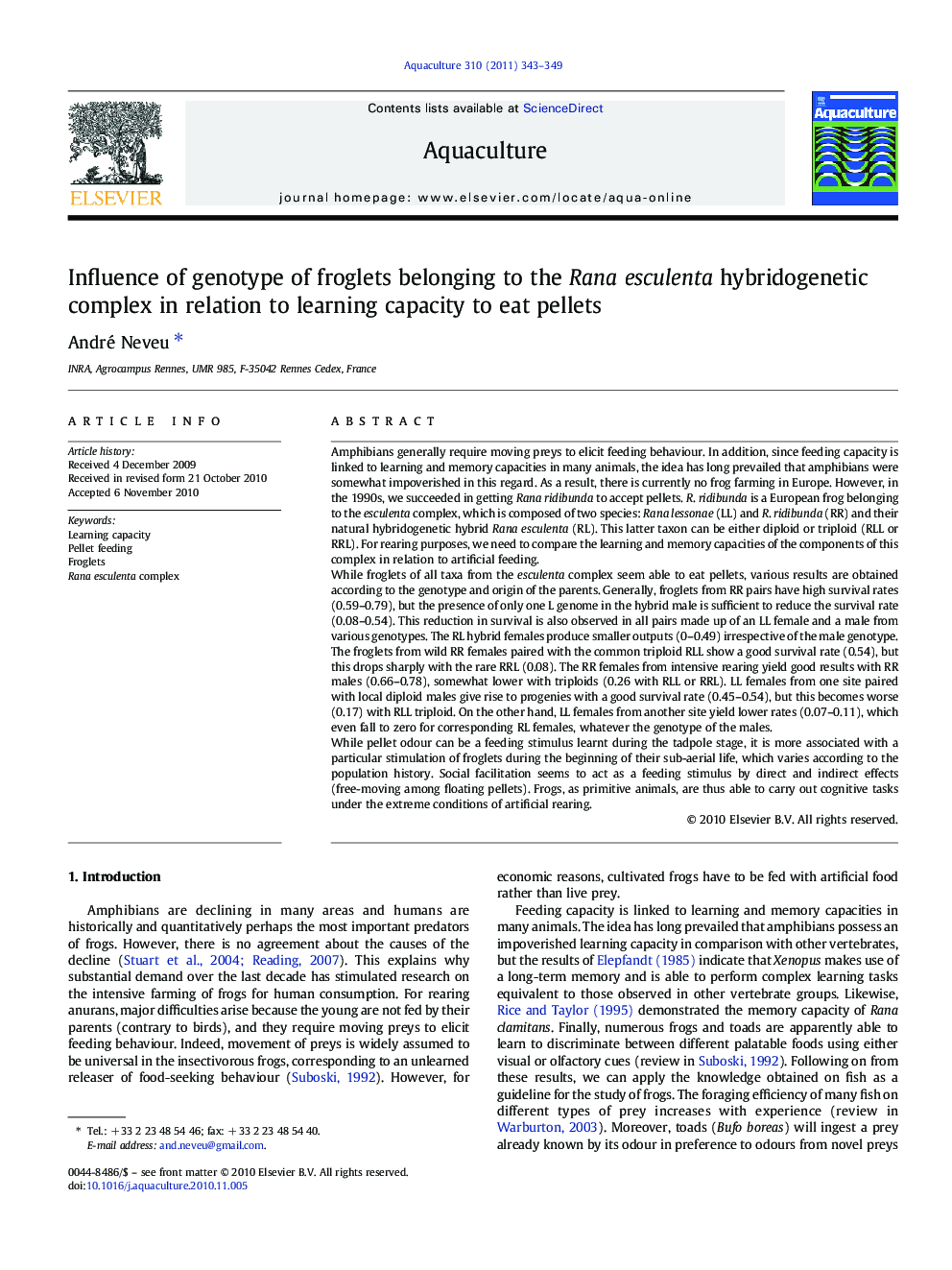| کد مقاله | کد نشریه | سال انتشار | مقاله انگلیسی | نسخه تمام متن |
|---|---|---|---|---|
| 2423078 | 1552915 | 2011 | 7 صفحه PDF | دانلود رایگان |

Amphibians generally require moving preys to elicit feeding behaviour. In addition, since feeding capacity is linked to learning and memory capacities in many animals, the idea has long prevailed that amphibians were somewhat impoverished in this regard. As a result, there is currently no frog farming in Europe. However, in the 1990s, we succeeded in getting Rana ridibunda to accept pellets. R. ridibunda is a European frog belonging to the esculenta complex, which is composed of two species: Rana lessonae (LL) and R. ridibunda (RR) and their natural hybridogenetic hybrid Rana esculenta (RL). This latter taxon can be either diploid or triploid (RLL or RRL). For rearing purposes, we need to compare the learning and memory capacities of the components of this complex in relation to artificial feeding.While froglets of all taxa from the esculenta complex seem able to eat pellets, various results are obtained according to the genotype and origin of the parents. Generally, froglets from RR pairs have high survival rates (0.59–0.79), but the presence of only one L genome in the hybrid male is sufficient to reduce the survival rate (0.08–0.54). This reduction in survival is also observed in all pairs made up of an LL female and a male from various genotypes. The RL hybrid females produce smaller outputs (0–0.49) irrespective of the male genotype. The froglets from wild RR females paired with the common triploid RLL show a good survival rate (0.54), but this drops sharply with the rare RRL (0.08). The RR females from intensive rearing yield good results with RR males (0.66–0.78), somewhat lower with triploids (0.26 with RLL or RRL). LL females from one site paired with local diploid males give rise to progenies with a good survival rate (0.45–0.54), but this becomes worse (0.17) with RLL triploid. On the other hand, LL females from another site yield lower rates (0.07–0.11), which even fall to zero for corresponding RL females, whatever the genotype of the males.While pellet odour can be a feeding stimulus learnt during the tadpole stage, it is more associated with a particular stimulation of froglets during the beginning of their sub-aerial life, which varies according to the population history. Social facilitation seems to act as a feeding stimulus by direct and indirect effects (free-moving among floating pellets). Frogs, as primitive animals, are thus able to carry out cognitive tasks under the extreme conditions of artificial rearing.
Journal: Aquaculture - Volume 310, Issues 3–4, 9 January 2011, Pages 343–349